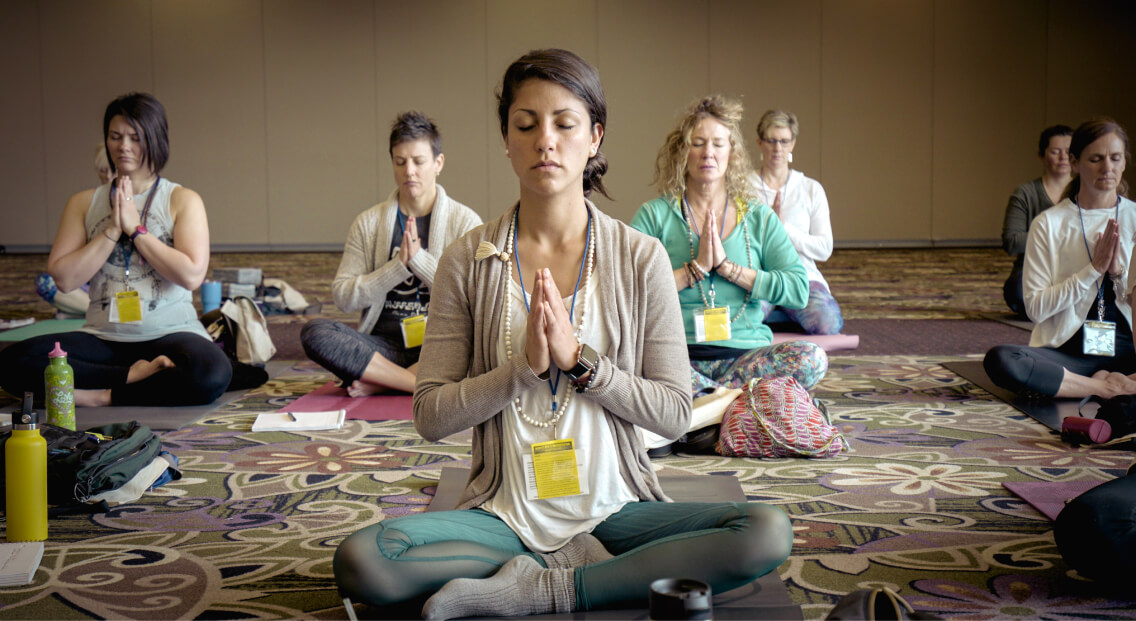Yoga is one of the most profound gifts of ancient India to humanity. Rooted in spirituality, philosophy, and science, yoga has evolved over millennia. According to various ancient Indian scriptures, yoga has been present from eternity. It was first introduced by Lord Shiva, known as Adiyogi, or the first yogi. He is believed to have taught yoga to seven sages, or the Saptarishis, who carried this knowledge to different parts of the world.
However, when we seek concrete historical evidence, the journey becomes fascinating yet elusive. In this blog, we will trace the origins of yoga, beginning from its earliest references in the Vedic era to its evolution through the teachings of Patanjali and its incorporation into Buddhist traditions.

Yoga in the Vedic Period
The earliest references to yoga can be found in the ancient Vedas, specifically the Rig Veda, one of the oldest known texts (dated to around 1500–1200 BCE). The Vedas describe the concept of yuj, meaning union, which forms the root of the word “yoga.” In this context, yoga referred to the union of the individual self with the universal consciousness.
- Key Practices in the Vedic Era:
The Vedic hymns often mention meditative practices and rituals performed by sages to harmonize the mind and body with nature. These practices laid the foundation for the development of yoga as a discipline. - Rig Veda and Yoga:
The hymns of the Rig Veda emphasize the importance of self-discipline and mental focus, which are essential elements of yoga. Although rudimentary, these references mark the beginning of yogic philosophy. Even inside Bhagwat Geeta Yoga has been discussed in details.
The Harappan Connection: Pashupati Seal
While the Vedic texts provide conceptual roots, archaeological evidence points to the prevalence of yoga-like practices in the Indus Valley Civilization. The famous Pashupati seal (dated ~2350–2000 BCE) depicts a figure, possibly a proto-Shiva, seated in a posture resembling a meditative asana. This seal suggests that yoga might have been practiced even before the Vedic period.
The Pashupati seal remains a strong indicator that yoga, as a physical and spiritual practice, has ancient origins far older than recorded history.
Classical Yoga: Patanjali’s Contribution
The most systematic and comprehensive documentation of yoga comes from the Yoga Sutras of Patanjali, written around 200 BCE–200 CE. Patanjali is often regarded as the father of classical yoga. His Yoga Sutras codified the philosophy and practices of yoga into a structured framework known as the Ashtanga Yoga or the Eightfold Path.
- The Eightfold Path:
- Yama (Ethical Restraints): Principles like non-violence and truthfulness.
- Niyama (Self-Discipline): Practices like cleanliness and contentment.
- Asana (Postures): Physical exercises to strengthen the body.
- Pranayama (Breath Control): Techniques to regulate energy through breath.
- Pratyahara (Withdrawal of Senses): Turning inward to focus the mind.
- Dharana (Concentration): Fixing the mind on a single object.
- Dhyana (Meditation): Deep contemplation leading to stillness.
- Samadhi (Liberation): Union with universal consciousness.
Patanjali’s Yoga Sutras remain the cornerstone of yogic philosophy and are still widely studied and practiced today.
Buddhist Influence on Yoga
With the emergence of Buddhism (around 500 BCE), yoga took on new dimensions. Buddha himself practiced and taught meditative techniques that emphasized mindfulness, self-awareness, and liberation from suffering.
- Yoga and Buddhist Meditation:
Buddhist traditions incorporate yoga-like practices, particularly in the form of Dhyana (meditation). The focus shifted to mindfulness (Vipassana) and compassion, highlighting mental clarity and emotional balance. - Integration with Yogic Philosophy:
Buddhism and yoga share a common goal of attaining enlightenment and liberation (nirvana or moksha). The practices of right mindfulness and right concentration from the Eightfold Path in Buddhism align closely with Patanjali’s Dharana and Dhyana.
The Timeless Practice
Yoga, as we see today, is the result of thousands of years of evolution. From its roots in the Vedic era to the systematic teachings of Patanjali and its refinement through Buddhist practices, yoga has always been a dynamic and adaptable discipline. It has transcended geographical and cultural boundaries, becoming a universal practice for physical, mental, and spiritual well-being.

